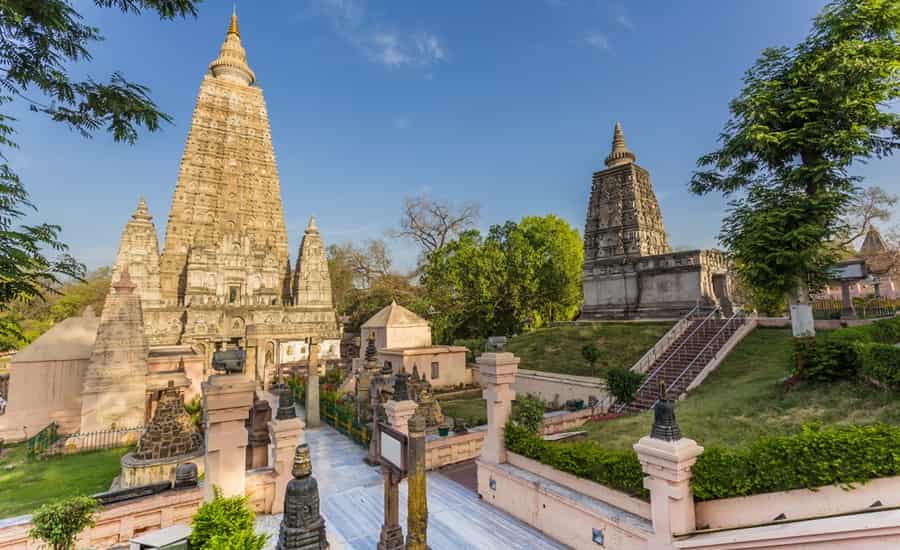The Mahabodhi Temple, located in Bodh Gaya, India, stands as a symbol of enlightenment and is one of the most revered Buddhist pilgrimage sites globally. Steeped in history and spirituality, this UNESCO World Heritage site attracts millions of visitors each year. In this guide, we will take you on a journey through the Mahabodhi Temple, providing essential information, historical context, and practical tips to make your visit a truly enriching experience.

Historical Significance
The Mahabodhi Temple, also known as the “Great Awakening Temple,” holds immense historical importance. It marks the spot where Siddhartha Gautama, the Buddha, attained enlightenment under the Bodhi tree over 2,500 years ago. The temple complex is a treasure trove of ancient Buddhist art and architecture, with its origins dating back to the 3rd century BCE. Visitors can explore the rich history of Buddhism through intricate carvings, inscriptions, and the sacred Bodhi tree, said to be a descendant of the original tree under which the Buddha meditated.
- Also Read: Buddhist Pilgrimage Sites in Bihar
Architecture and Design
The Mahabodhi Temple boasts a unique blend of architectural styles, reflecting the diverse periods of its construction and renovation. The main temple structure is a fine example of Indian brickwork, adorned with carvings depicting scenes from the Buddha’s life. The central tower, rising majestically, is a prominent feature of the complex. Visitors will also find a network of smaller shrines, stupas, and meditation cells surrounding the main temple, creating a serene and contemplative atmosphere.
Essential Sites Within the Temple Complex
The Mahabodhi Tree: Standing as a living symbol of enlightenment, the sacred Bodhi tree is a must-visit site. Pilgrims often engage in meditation beneath its branches, seeking spiritual solace.
The Main Temple: Enter the main temple to witness the ancient throne-like Vajrasana, believed to be the exact spot where the Buddha attained enlightenment. The inner sanctum houses a colossal gilded image of the Buddha in a meditative posture.
Animesh Lochana Chaitya: This small shrine marks the Buddha’s six years of meditation in front of the Bodhi tree. Pilgrims believe that the Buddha spent an entire week here gazing at the Bodhi tree without blinking.
Ratnachakrama (Jewel Path): This circular path around the main temple is where the Buddha is said to have walked for seven days after his enlightenment. It is adorned with intricately carved railings.
Vajrasana: The diamond throne is a significant structure within the complex and is believed to be the seat of the Buddha’s enlightenment. Pilgrims often offer prayers and perform rituals at this sacred site.
Pilgrimage Rituals and Etiquette
When visiting the Mahabodhi Temple, it’s essential to respect the sacredness of the site. Pilgrims often engage in rituals such as circumambulating the main temple, offering prayers, and lighting incense. Silence is encouraged, allowing visitors to experience a deep sense of tranquility and introspection. Dress modestly, removing shoes before entering sacred areas, and follow any specific guidelines provided by the temple authorities.
Practical Tips for Visitors
Best Time to Visit: Plan your visit during the winter months (October to March) when the weather is pleasant and conducive to exploration.
Entry Requirements: Check for any entry fees and be aware of the temple’s opening hours. Foreign visitors may need to provide identification for entry.
Accommodations: Bodh Gaya offers a range of accommodations, from budget guesthouses to luxury hotels. It’s advisable to book in advance, especially during peak pilgrimage seasons.
Local Cuisine: Explore the local culinary delights, with Bodh Gaya offering a variety of vegetarian and vegan options in line with Buddhist principles.
Cultural Sensitivity: Be respectful of the local customs and traditions. Seek permission before taking photographs, especially in and around the temple premises.
- Suggested Tour: Book Special Gaya Holiday Packages
Conclusion
A visit to the Mahabodhi Temple is not just a physical journey; it’s a spiritual odyssey that connects visitors to the roots of Buddhism. By immersing oneself in the history, architecture, and rituals of this sacred site, one can gain a deeper understanding of the profound teachings of the Buddha. Whether you are a devout pilgrim or a curious traveler, the Mahabodhi Temple promises an experience that transcends time and leaves an indelible mark on the soul.
Also Read:

 Call
Call WhatsApp
WhatsApp Enquiry
Enquiry